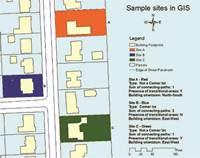Residential Site Environments and Yard Activities of Older Adults

Design guidelines for site plans could be created and used to improve the quality of residential site environments for yard activities of older adults, potentially leading to higher levels of physical activity and better health outcomes. Based on the results of previous research on neighborhood environments, site environmental features were classified into four categories: 1) Typology, 2) Motivators, 3) Functionality, and 4) Safety, and studied at the building level and at the site level.
Study participants were randomly recruited from five assisted living facilities of one of the largest long-term care management systems in Houston, TX. The average age of participants was 84.2 years. Environmental perceptions of older adults regarding their former residential sites were collected by questionnaire items. Objective measures of environmental features were collected by using GIS instruments.
It was found that levels of perceived site walkability, rated by older adults regarding their former residential sites, were significantly higher among active older adults who had engaged in yard activities at least one time per day or at least ten minutes per occurrence than among the less active older adults. This study examines: What characterizes a high-quality residential site for older adults’ yard activities? The discussion utilizes the hypotheses and findings from this study to generate some preliminary guidelines for designing residential sites for older adults.


Add comment
Log in to post comments